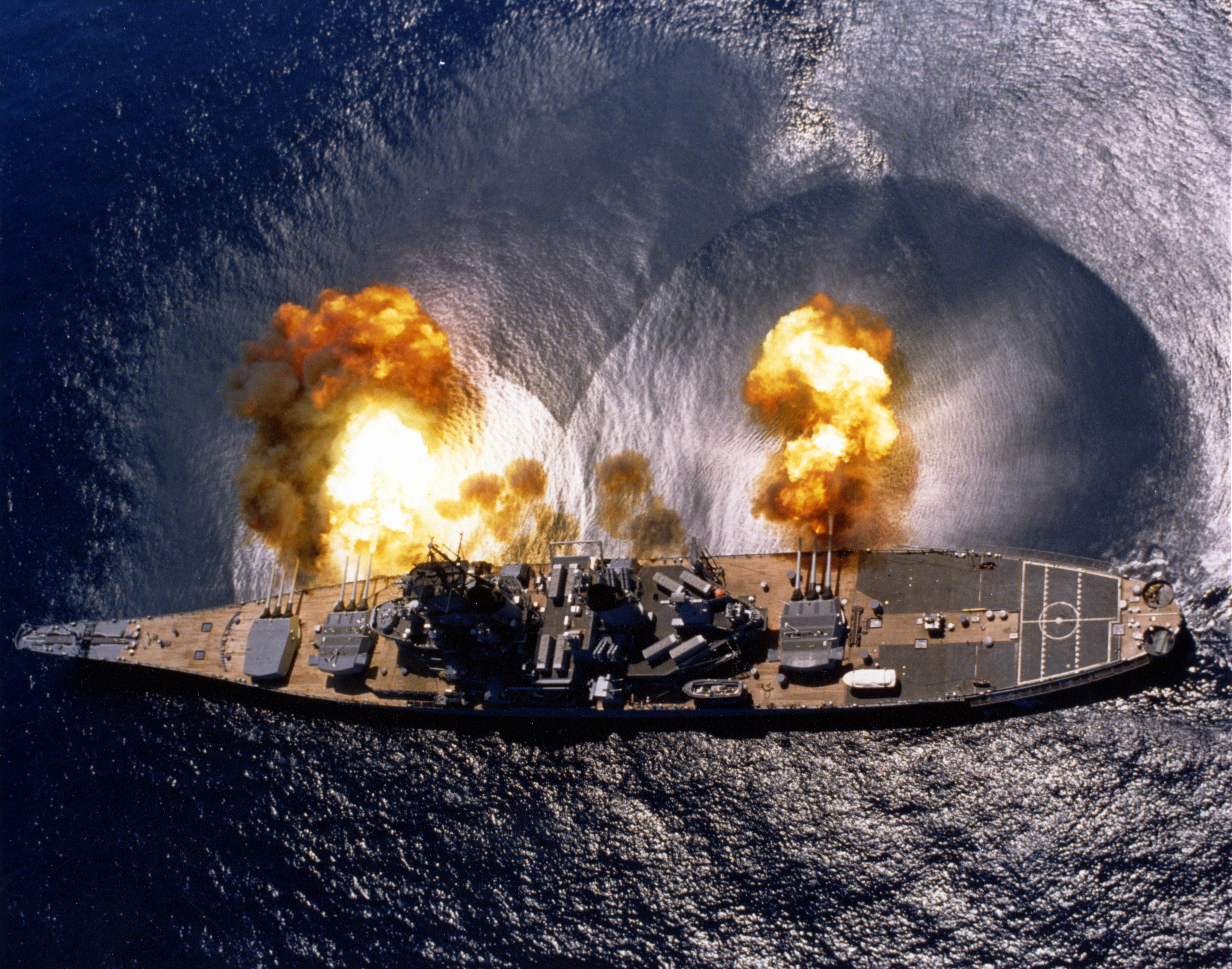
Naval gunfire support
Naval gunfire support (NGFS), also known as naval surface fire support (NSFS),[1] or shore bombardment, is the use of naval artillery to provide fire support for amphibious assault and other troops operating within their range. NGFS is one of several disciplines encompassed by the term naval fires. Modern naval gunfire support is one of the three main components of amphibious warfare assault operations support, along with aircraft and ship-launched land-attack missiles. Shipborne guns have been used against shore defences since medieval naval warfare.
Tactics[edit]
Naval gunfire support is classified into two types: direct fire, where the ship has line of sight with the target (either visually or through the use of radar), and indirect fire, which, to be accurate, requires an artillery observer to adjust fire.
When on the gun line, ships are particularly vulnerable to attack from aircraft coming from a landward direction and flying low to avoid radar detection, or from submarines because of a predictable and steady (non-evasive) course.
History[edit]
Early history[edit]
An early use of shore bombardment was during the Siege of Calais in 1347 when Edward III of England deployed ships carrying bombards and other artillery.[2] An early type of vessel designed for the purpose of shore bombardment was the bomb vessel, which came into use during the 17th century. The burning of Falmouth by the Royal Navy was among the grievances of the United States Declaration of Independence.[3] These were small ships whose main armament was one or two large mortars that fired explosive shells at a high angle. They were typically poor sailing craft that were of limited use outside their specialized role. However, small vessels armed with large mortars saw use as late as the American Civil War, when the Union Navy used them in several attacks on coastal fortifications.
During the 18th century, another special class of vessel known as floating battery was devised for shore bombardment. An early use was by the French and Spanish during the Great Siege of Gibraltar (1779–1782). During the Napoleonic Wars, the Royal Navy commissioned several vessels of the Musquito class and Firm class. These carried either naval long guns or carronades. Floating batteries were used by the French and British during the Crimean War and by both sides during the American Civil War.
United States[edit]
Naval gunfire is still used for many of its traditional purposes. In the Marine Corps, artillery units have several naval gunfire liaison officers (NGLO, pronounced "no-glow") in each battalion to maintain close contact with the Navy for amphibious operations. The NGLO is responsible for the Shore Fire Control Party and works in the Fire Control Center with other liaison officers to coordinate naval gunfire with close air support, mortars, and howitzers. The NGLO joins the others in the planning of fire missions in support of the Marine Infantry Regiment.
The Marine Corps maintains three active (1st, 2nd, & 5th) and three reserve (3rd, 4th & 6th) Air Naval Gunfire Liaison Company (ANGLICO) units. ANGLICO members are temporarily assigned to combat units of the United States and foreign nations that lack inherent fire support capability, such as naval gunfire. The ships equipped with the large caliber guns of the early and middle of the 20th century have all been decommissioned. The last American battleship, USS Missouri, was decommissioned in 31 March 1992, which left no naval guns larger than 5 inches (127 mm) in service on any active warship in the United States Navy until the introduction of the Zumwalt class with the 155 mm (6.1 inch) Advanced Gun System (however these larger guns are functionally inoperable because no ammunition was purchased for them). The aircraft carrier and sea to land missile have been used instead. The remaining naval artillery typically has more advanced targeting systems than the older large-caliber artillery.
Within the U.S. there was a long debate over the role naval gunfire support should play in warfare. This took on a greater sense of urgency with the removal of the last two battleships from the Naval Vessel Register.
[edit]
Despite the reduction in calibre size to 5-inch (127 mm) guns, even ground-based NATO forces' artillery observers and Forward Air Controllers are taught the rudiments of calling in and adjusting naval gunfire. With the exception of a few procedures, the controlling principles are quite similar in both land and naval bombardment. Shore fire control parties participate in field operations, often with a Marine artillery battery to provide simulated naval gunfire support. When available, Marine spotters will call the fire missions for naval ships undergoing their gunnery qualification tests, to provide both parties the opportunity to practice their skills. One use of naval gunfire in modern operations is to provide Suppression of Enemy Air Defenses for close air support. Well-timed salvos provide covering fire for sorties and prevent enemy troops and batteries from effectively using anti-aircraft weapons.